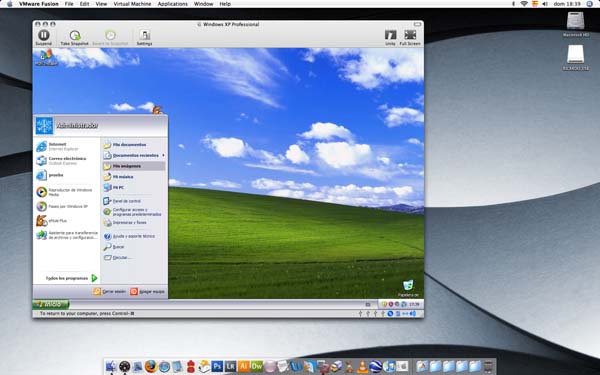

- #Vmware fusion 12 for mac install
- #Vmware fusion 12 for mac drivers
- #Vmware fusion 12 for mac upgrade
- #Vmware fusion 12 for mac pro
- #Vmware fusion 12 for mac software
When your guest operating system is running, when you insert your USB memory into your host and you see a window like the image below, first connect your device to your Mac. This way, you can easily plug a USB stick into both your Mac and your guest operating system.
#Vmware fusion 12 for mac software
When you insert a flash drive into the USB port of your host computer, the Fusion software will ask where you want to connect that device. You can use your USB flash drives or storage devices in virtual machines you run on your Mac. In the window that opens, click New Folder to create a public folder in any location of your Mac, and after creating the folder, click the Add button.Īfter enabling the shared folder feature and creating a folder on your host computer, check the public folder on your host by creating a folder or file in the vmware-host\Shared Folders\WinXPVM on the guest machine. Open the settings of your guest operating system, activate the Shared Folder in the window that opens after clicking Sharing, and then click the + button. With this feature, you can quickly transfer files between your macOS system and your guest machine.
#Vmware fusion 12 for mac pro
One of the great features of VMware Fusion Pro virtualization software is the Shared Folder feature. You may need an Internet connection for operations on the guest machine.Īfter opening the CMD command prompt by pressing the Windows Key + R on the Windows XP machine, test your Internet connection by pinging the Google servers with the ping 8.8.8.8 command.Īlso, after the ping test, open Internet Explorer and check your connection by visiting the Google homepage. When you run a Windows virtual machine on your macOS operating system, it is useful to check the local network and Internet settings. When your virtual computer restarts, open My Computer properties and check the Service Pack version under System. Wait while your Windows XP system is upgraded to SP2.Īfter completing the Windows 圆4 Service Pack 2 installation, click Finish. Start the SP2 installation by double-clicking the SRSP2 script from the files in the CD image.Ĭlick Next directly in the Windows 圆4 Service Pack 2 installation wizard.Īfter accepting the Windows XP Service Pack 2 license agreement, continue without changing the default location in the next Uninstall Folder settings window. Select the Windows XP SP2 Installer ISO file you downloaded to your computer from the table below the article and click Open.Īfter mounting the SP2 (Service Pack 2) ISO image to the VM, click My Computer and view the content of CR0SPX2_EN.
#Vmware fusion 12 for mac upgrade
Since the ISO image we used while preparing our article contains SP1 (Service Pack 1), we will use an additional ISO image to upgrade to SP2.Ĭlick Virtual Machine / CD/DVD / Choose Disc or Disc Image in the tool menu of your XP machine. You can find SP1 and SP2 versions of Windows XP ISO files on the internet.


You can transfer files by dragging and dropping a folder or file on your Mac’s desktop environment to the desktop of your Windows XP machine.
#Vmware fusion 12 for mac drivers
Wait while the drivers for the video and other devices of the virtual PC are being installed, and do not close the wizard.Īfter installing VMware Tools on Windows XP, restart your virtual system for the settings to take effect.Īfter restarting your guest machine, click View / Full Screen from the Fusion tool menu and set the screen resolution of the virtual machine to full screen.
#Vmware fusion 12 for mac install
If you plan to use your Windows XP guest machine with other products of VMware, select Complete from the installation options and click Next.Ĭlick Install to start the installation of XP virtual machine tools. While the XP guest machine is running, click Virtual Machine / Install VMware Tools from the Fusion tool menu and click Install in the warning window that opens.Ĭlick Next to continue with the VMware Tools setup wizard. Your desktop environment will be ready when your Windows XP virtual system restarts.Īfter installing Windows XP with VMware Fusion on macOS, you need to install VMware Tools to increase system performance and adjust screen resolution. If you are not going to use your Windows XP virtual computer in a domain environment, include it in the WORKGROUP network.Īfter your Windows XP system is installed, wait while it restarts. Select Typical Settings for the network settings of the guest machine and continue. Type the computer name of the guest operating system and also click Next after setting a password for the admin account.Ĭonfigure the time and date settings of your virtual system, as well as the time zone, according to the region you live in. Type your 25-character Windows XP Pro product key and click Next again.


 0 kommentar(er)
0 kommentar(er)
